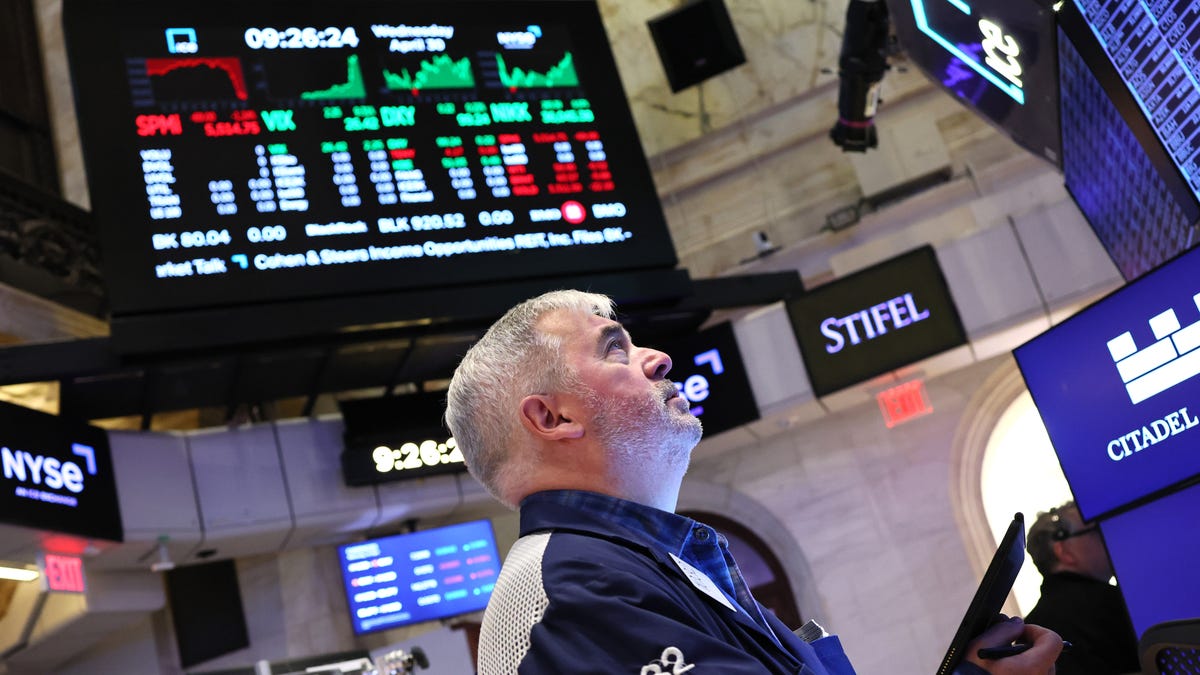President Trump signs executive order to relieve some auto tariffs
President Donald Trump signed an executive order to relax some auto tariffs, though the industry won’t see a total exemption.
WASHINGTON − And on the 101st day, trouble.
The morning after President Donald Trump marked his first 100 days back in the Oval Office with a triumphant rally in Michigan, his celebratory rhetoric hit the hard wall of economic reality.
For the first time in three years, the U.S. economy contracted. While the statistics in the first quarter of the year were complicated by the impact of the administration’s looming tariffs, it prompted the already-volatile stock markets to tumble and seemed to ratify consumers’ sinking confidence.
“BE PATIENT!!!” Trump said in a post on Truth Social, blaming what he called “the Biden ‘Overhang'” left by his predecessor for the decline. On a social media site, it’s hard to assess whether his all-caps message was meant as a plea or a demand.
Either way, there are time limits on a president’s ability to blame his predecessor for what happens to the nation’s economy during his watch, even when events are outside his control.
In this case, economists say that the turbulence that is rocking almost every sector of the U.S. economy, and much of the world, is tied directly to Trump’s policy prescriptions. Front and center are both his stiff tariffs and the chaotic way in which they’ve been unrolled − threatened, announced, imposed, paused and promised.
Dismiss Democrats’ criticism? Sure. Question the polls? They’ve been wrong before. But the black-and-white economic numbers that show an economic slowdown, with the warning of a possible recession ahead, are a president’s worst nightmare.
“Donald Trump is the only president to have sent a strengthening economy into a nosedive in 100 days,” said Andrew Bates, a former spokesman in the Biden White House. He said Trump had inherited from Biden “the best-performing economy in the world.”
From the White House, the sunny side
The White House chose to look on the bright side. “New Data Reveals Strong Economic Momentum” was the headline on an official press release, noting that the underlying economy was solid. Most of the decline could be attributed to a surge in imports, as businesses tried to build inventory before the stiffest tariffs since the 1930s went into effect.
That said, nearly all independent economic forecasters now predict that when the tariffs push prices higher, presumably soon, the economy will slow significantly. Many expect a recession − defined as two consecutive quarters of negative growth − albeit perhaps a mild one.
The immediate question ahead is whether the economy contracts in the second quarter, too.
The gross domestic product, which measures the value of all goods and services produced in the United States, shrank at a seasonally adjusted rate of 0.3% from January through March. It was a dramatic reversal from last year, when the GDP grew by 2.8%.
When the new statistics were released, the Dow Jones, the S&P and the Nasdaq fell early in the day.
Next up: The ‘big, beautiful bill’
While there’s never a good time for a president to see the economy contract, it’s sometimes better to have it happen early in his term, with time left to respond and restore growth.
But for Trump, this economic red flag is at the very least inconvenient.
His job-approval ratings have slid in a series of surveys taken to assess his first 100 days in office, now down to the low 40s, or worse. While his standing is strongest for his action against illegal immigration, his economic ratings, once a strength, are now under water.
He is pushing Congress to enact what he calls a “big, beautiful bill” with his major domestic legislative priorities by early summer.
The package of tax reductions and sweeping spending cuts faces headwinds from opposition Democrats and some Republicans worried about the federal deficit, and the GOP’s narrow House majority leaves no room for error. It was always going to be difficult.
That just got harder.
